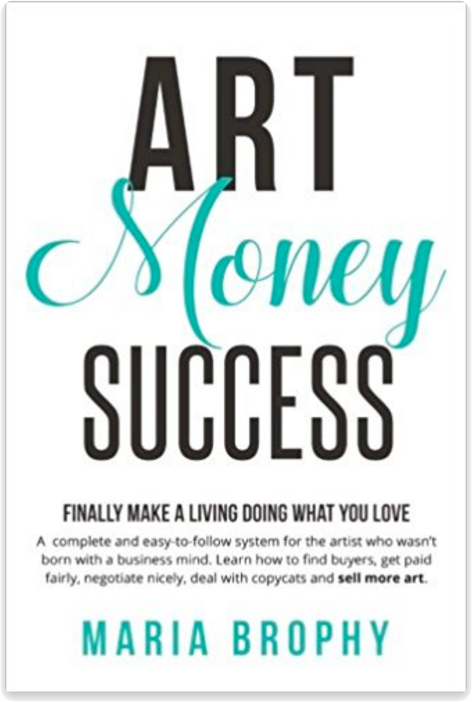
“The folks that put on these fundraisers are not malicious people. They just don’t understand how selling donated art at low prices hurts the art community.” Lori Woodward, Fine Artist
We recently sent Drew to a fundraiser put on by Hinano Tahiti, one of our clients. They asked Drew to do a live, custom painting of a surfboard at the event, which was to be auctioned that night.
There was an exciting bidding war between two men, and of course only one could “win”. It was fun watching the interaction!
We charged a fee to have Drew paint the surfboard at the event. They sold the painting for three times as much and one happy gent went home with the painting. The charity made out and it was a win-win for all.
Hinano Tahiti understood the importance of providing top quality work at auction. They also appreciated Drew’s time and had no problem compensating him for it. If only all fundraisers worked this way…
There are many great charities in the world, and they need your art! But there can be problems with donating art to charities.
The good news is, together we can help charities to get better quality artwork by encouraging them to create a new way of working with artist donations.
THE PROBLEM CHARITIES HAVE BY NOT SHARING REVENUE WITH THE ARTISTS:
You’ll go broke giving to every charity that asks. I know we used to give to anyone who called. It was flattering at first. Then, as years went on, I found many, many problems with giving blindly and not asking for anything in return.
For one, we were losing money we couldn’t afford to. We already had our personal charities that we donated money to.
For another, it was taking a lot of our time and energy. And some of the people we were giving to sadly did not appreciate it.
And lastly, we found that we weren’t wanting to give the best artwork, but rather tempted to give the items that didn’t sell.
Drew and I attended a Surf Industry event a few summers ago. It’s a black tie event held yearly in beautiful Laguna Beach, CA. They hold a charity auction, both silent and live. Many people who attend are wealthy and have no problem bidding on $10,000-$100,000 items.
You would think an event such as this would attract quality artwork. But in the silent auction, I was surprised to see that there were amateur pieces. There were also a few pieces of art from well known artists that appeared as though they took art that wasn’t selling in their studio and donated it to get rid of it.
Auctioning low quality art at a black tie event does not work. But I also know, first hand, that this event does not share in the revenue with the artist donating the work.
And that’s a problem. If the charity is not making it worthwhile financially to donate art, they are not going to attract quality art.
HOW MANY CHARITABLE DONATIONS SHOULD YOU MAKE?
Choose 2 or 3 charities that you care about and give to them. By focusing on just a few charities, you can actually make a difference with your donations. After your chosen few, give only to organizations that share in the revenues of the sales. Never donate anything if it will hurt you financially.
Every week I receive 3 to 4 e-mails and calls from people, friends and clients who ask for a donation. This is the downside to having a lot of friends and doing too much networking!
The requests range from the local High School grad night event to very prestigious events and everything in between.
Always, the charities are excellent organizations which are doing wonderful things. It’s hard to turn these people away, particularly if the person is a friend or client.
But if I gave to even half of the requests, I’d have to shut my business down and get a real job, God forbid!
Usually for the small stuff, like the High School, I’ll donate art prints that are just sitting in the studio. It’s not a problem to do that.
But for the black-tie events, we would not want to donate anything but top quality artwork. Otherwise, what’s the point? If you donate artwork that’s less quality compared to what you are proud of, than you will detract new collectors and you’ll make a bad name for yourself, and the charity itself doesn’t benefit either.
But on the other hand, when donating your best work, you’ll need to be compensated.
Together, we can convince the charities out there that it’s in their best interest to make it enticing for artists to donate their best works.
CHALLENGES WITH CHARITABLE REQUESTS THAT WE CAN HELP TO CHANGE:
- Many charities do not give the artist a portion of the proceeds.
- The expenses out of pocket for art supplies, canvas and frames: Many charities ask for Drew’s painted surfboards. The surfboard itself costs us $600 – $900 depending on the quality and size. And then there’s the art supplies and time to paint it.
- IRS Does not Value Artist’s Time: We are not able to write off the amount of time it takes to paint OR the value. The IRS only allows you to write off your materials, which artists do anyway. If you’re looking for a write-off, you are often better off writing a check for the charity rather than giving them art (unless they split the revenue).
- Nothing to Gain: Other than feeling good about your contribution, there is little to gain. There is no marketing value to these events, unless your name and art is printed on all of their brochures and advertising (this rarely happens).
- Art often will sell at auction for less than it’s worth: Occasionally the paintings we have contributed have auctioned off for less than our collectors pay. This hurts the artist, the collectors and the value of the art.
THERE IS A SOLUTION!
A few years ago we instituted guidelines for charities. I wrote about it on Drew Brophy’s blog back in September – you can read that here.
And thanks to Lori Woodard’s point of view written in her article titled FUNDRAISERS THAT DO IT RIGHT on Fine Art Views Blog last week, I’ve been inspired to fine-tune how I handle the requests. I’ve tidied up a form letter that I now am sending to every request for a donation. There is a copy at the bottom of this post. You are welcome to use it.
TOGETHER, ARTISTS CAN HELP CREATE A WIN-WIN FOR CHARITIES, ARTISTS AND COLLECTORS:
Artists, let’s all get on the same page here and help educate the fundraisers and charities that need our help. If we encourage them to, charities will make it easier for artists to donate their top quality art. It’s a win-win for everyone.
Feel free to copy and use my form letter below:
CHARITABLE DONATION EMAIL FORM LETTER
Thank you for the opportunity to donate art to your organization. I would be honored to have my artwork and name associated with yours and the great work you are doing.
Due to the extremely high volume of requests from many great charities, I have developed guidelines that enable me to donate artwork at less than retail cost. These requirements also help me to reduce losses since current U.S. tax laws are unfavorable to artist donations.
Please consider offering these terms for all of your future artist donations, as your organization will benefit from it greatly by attracting top quality, high value artwork; and over time, will become known as the go-to-organization for unique and valuable art.
My donation guidelines are:
- The organization agrees to split the proceeds from the sale or auction 50/50 (50% to the Artist and 50% to the organization). I ask for payment within 7 business days of the sale. The name, address, phone and e-mail of the buyer will be provided to me for my records.
- A minimum or a reserve price will be set and will be designated by me. (This is required to honor the value of the artwork for my existing collectors and partner galleries.)
- In the event the artwork does not sell, it will be returned by the organization to me, at the organization’s expense, within seven (7) business days following the auction or sale.
If these guidelines are agreeable to you, please let me know and I’ll draw up a Consignment Agreement and send you photos of my donation for your consideration.
Sincerely,
Artist Name Here.










56 Responses
Maria:
Thanks for your insights.
Charity work involves a level of complexity I was not really familiar with.
You have to be both philosophical and practical while making donations or refusing to make donations. Thanks for clarifying.
I was also not aware you receive so many requests for donations.
Art work is a challenging business. Whew! You have to deal with so many different variables. Sometimes, I wonder how you and Drew ever manage. You guys are tough cookies. More power to you both.
Cheerio. And keep on posting. Your articles are mind-bending.
Archan, I’m surprised you didn’t comment on the photo of Drew and the sexy Tahitian Girls. I was expecting something from you on that!
Great article that I COMPLETELY RELATE TO!!! Holy moley!!
I find that for most every event I’ve donated to, signed giclée prints are more than welcome, eliminating the need to hold back on the “good stuff”.
Having a portion of proceeds coming back to the artist, really helps cover costs and perpetuate’s the artist’s ability to give more. Logical and philanthropically fair.
There are of course exceptions to the rule, but having a “company policy” lets you off the hook a bit with the guilt trips involved.
Yeah, the guilt trips come with the territory. It’s hard to say no to a great organization doing wonderful things that you believe in. But as my accountant likes to say, “If you aren’t making a profit, than what you have is a hobby.” And giving away too much to too many will kill your biz.
With the giclee prints, they cost quite a bit, too (unless you print your own). So a cost-sharing in that case is necessary as well, especially if there’s a costly frame.
Thanks for the comment, Jay!
Okey-dokey, Maria, well, you asked for it…so here goes nothing…
Move over, Drew, this town ain’t big enough for the both of us. And Drew, you oughta be ashamed of yourself, prancing around with beauties, while poor Maria waits for you at home, looking at the alarm clock. Sort of like Hugh Grant ignoring Liz Hurley for…well, never mind.
And Maria, shame on you, for allowing your hubby the leeway to behave like this in public. Drew’s got a roving eye and that ain’t good for your marriage none. You better keep Drew on a leash too.
I was actually looking forward to a cat fight between you and the Tahitian women–to win the hand of Drew–but you disappointed us.
Lookin’ at the photo, I almost melted in my seat…it was so hot. And the girls weren’t bad either! Drew is my main man, the man with the golden gun. And nobody does it better, not even James Bond.
The only sexy, Tahitian girls I come across these days are the ones in my fantasy world. And this one’s pushing 90 and serving me soup at the public welfare kitchen. Some guys have all the luck, and nice guys like yours truly finish last. Wait, was there ever a competition?
Since I neither have Drew’s talent nor a bevy of beauties at my beck and call, I can do the next best thing: light up my lovely M-plant. Like they say, Jose if you can’t write no poetry…this bud’s for you. Cheers!
Oh boy, I asked for it, didn’t I?!!
Maria,
Thanks for sharing (and permitting the copy of) your letter to charities. makes a lot of sense. Now, we must spread the word to other artists!
Dear Maria,
THANK U so much for yours and Drew’s selflessness in giving advice, insight and wisdom on biz and marketing! I love all of your articles. I m going to sign up for your newsletter. Hope this finds you and your loved ones doing FANTASTICALLY!
Thank you, I’m actually looking into the process of setting up an auction for an event and was trying to figure out what was fair to offer artist for it. I must say I was happy to run across this information. It wasn’t as easy to find as I thought it would be.
Thank you so much for sharing these guidelines. I get about 6 requests a year and have been both flattered and saddened by the results of several auctions of my original work. When a $1800 retail painting sold for $300. at auction I vowed never to donate another painting. With your guidelines, I can now offer a compromise to folks.
On a side note, I actually had a school fundraiser coordinator contact me to request a painting for their auction. She said I was in a group of accomplished painters that were selected to participate. Her proposal was to split the proceeds 50/50 but there would be a cap of $125 per painting AND we could not sign the work. They wanted the artists to be a mystery so buyers “bought what they loved” and not the name. After a long pause & a spike in blood pressure, I asked if she had any experience in working with “accomplished” artists. She said no, but she likes to go to galleries and thinks her proposal was being fair to the artists.
She just didn’t have a clue about our industry, as with many charities, and needed to be educated. Once I explained that a 50/50 split of $125 was putting me in the hole by $300-$400, and that no professional artist would ever want their work to be a “mystery” she apologized, and they decided not to include art in their auction that year.
this is terrific. I donated 2 small pieces this past year to a good cause and got a note back thanking me for the donation and here was proof so I could use it on my taxes but no where did they mention if the items sold or for what. Since I couldn’t afford the black tie affair..I felt doubly cheated. I am going to use your contract if allowed, to help me the next time I get asked. Certainly I feel the donating artists should have at least been allowed to see their work hung!!!! I simply do not sell enough, yet, to donate much of anything and will be very judicious in choosing to participate in the future. Thanks for a great article.
Maria, thanks for the link and the mention. I want to add something here about how my friend, Monique Sakellarios handles fundraisers. She’s a local celebrity and gets asked often.
Monique now offers a gift certificate for her work or towards a print. It amounts to only a discount for the buyer, but makes her a profit, and it has worked very well, as she has gained new collectors and her work is not sold for less than retail price. The artist controls the discount, maintains a retail price,a nd only has to deliver the gift certificate to the event.
I think it would work well if the artist had a color printout or brochure with the gift certificate offering.
Thanks, Lori, that’s a great idea! And the other advantage is this: the artist gets to develop a relationship with the buyer/bidder, which leads to more sales down the road.
Hi Maria-
I turn to your site for much art business advice. I am having my first art reception at the end of March. I came across this opportunity while visiting a local museum. I am taking the plunge and putting my work out! I have 8 paintings hanging already. I will be sharing the show with 3 other artists. This is very exciting.
I am working on pricing my art accordingly. But I am considering taking a portion of my sales and donating it to a charity I am passionate for.
What are your thoughts on this? Not only do I want to make sales and support a charity, I also want to make it seem possible for other artists that have struggles in life that they can make this happen for themselves.
Thanks!
Robin M
Robin, thanks for your comment. I think it’s great if you can donate a % of your sales to your favorite charity. That’s a great way to make a difference for a cause that you personally care about.
Choose a % that you are comfortable with. We did an art show once and gave 20% of all sales to a foundation that we cared about. Everyone appreciated it, and we felt that we made a difference.
Thanks so much!
Hi Maria:
The young son of a family in our city was tragically killed in an accident in New Zealand while away as a student exchange, and apparently it’s going to cost $20,000 to get his body brought home which the family doesn’t have. I don’t even know this family, but I’m willing to donate several pieces of art and let them keep all the money and (HOPEFULLY) they sell decently enough. I just want to be sure, since I’m donating all the money if there is anything I need to have in writing from them? You said no real tax breaks, so I don’t need to worry about that or is there some sort of receipt I should get back?
Thanks for the question, Ivonne. In the U.S., the only tax break you can get for your artwork is what you spend on your materials. You cannot write off the amount of time that you put into creating the art.
Typically, when you donate items or money to a charity, you must get a receipt from that charity.
However, if you are just giving money to a family, then I don’t think it can be written off on your taxes. It has to be an actual charity, set up under the tax codes, for it to be a write off.
But, either way, it’s very sweet of you to help this family out. What a tragedy for them. (I personally prefer to give my money directly to families and people who need it than to organizations that spend the money they collect on highly paid CEOs and overhead!)
Depending on the charities tax status, it may be illeagal for them to share any profits with you.
One of our galleries has a fund raiser for Cystic Fibrosis. I am happy to donate to her event as she is an artist and “gets it”.
When you donate, you set the price of the piece. If it sells, she trades you a check. You write one for the full amount to the CF Foundation and she writes one to you for the full amount.
CF Foundation gets a great donation and the artist gets a great tax write-off for the full amount of the work. She covers the cost of the event as a cost of doing business (it’s her grand-daughter who has the disease).
I really enjoy the feeling donating this way feels. I feel valued. I too have gotten the form letter thanking me for my donation. Every time I feel like a sucker. I put heart and soul into my work, and you can’t be bothered to write me a personal letter to thank me. Really?
As a side note, it is utter crap that we can only write-off the raw materials. Just a clear indication of how little artists are understood and valued.
Sheron, that is a brilliant idea! Especially when it’s a non-profit that I want to contribute too. Thanks for mentioning that idea.
After hard thinking about this problem, I decided to start a Facebook page as a resource.
https://www.facebook.com/pages/Donating-Art-to-Raise-Funds-for-Charities-Thinking-of-better-ways/329866077130224
Please feel free to comment and share your experience and thoughts.
This is fantastic. I am an art professor and constantly have requests for my work and student work . I often ask the organispzation if there is any money available to pay students for matting and framing. I explain that it is unfair to ask for art work as well as a free maayng and framing which could cost well over $150. Having a guideline is very helpful, thank you!!!
I am the owner/moderator for a LinkedIn group called the Professional Quilters’ Alliance. Is it OK if I share the link for this page with my members? I think they will find it interesting and insightful. Thank you so much for sharing your knowledge so generously.
One problem with sellling art through these charity auctions: it can tend to undermine the gallery business. Who is going to the gallery if a collector knows he can get a great deal through an auction. It may be good for him but perhaps not so good for the art business system, especially the galleries that usually need all the help they can get just to survive.
In our hearts we love to help others. But when we’re expected to forfeit up something we put so much time and love into…let alone expenses, it simply does not work. They come up with these wonderful ideas and ways to do their own fundraising without thinking that in a normal world, anyone asking the average medium wage worker for the same amount of money that is involved in artwork would get barely no donations. They are earning a living at hard work and labor…so are Artists…and we have to put our own investments into Artist Quality Supplies that don’t come cheap plus our labor. We enjoy doing what we do of course, but to give it away seems unfair in many other aspects. And like many of you have said, auctions for charities don’t care if they sell a piece for $50…it’s free donated money to them while the artist’s work is devalued and they’ve then lost out on quite an investment of their own. This hurts every artist when it comes to pricing their art whether they donated or not. I think 60/40 sounds better…why not..the charity is getting 40% donation and they will think twice about an auctioneer selling so low..they’ll then want to make their share by earning and working for it just like the artist did…a fair deal. Then why wouldn’t the artist love to help them out…and have their artwork out there on the market …just like they planned to do in the first place. So yes, Lori’s ideas are wonderful!
Fantastic Info!
i am painting as a hobby i want to donate my paintings to a charity
I want a professional artist to take a look at my paintings before i go further
This Thursday May 16 I’m addressing this topic (Why and When do you Donate Your Art) on my Radio Blog BlogTalkRadio.com/annette-coleman please email me a voice memo from your smart phone on this topic or call in live 646-915-9294 Thurs May 16th, 9-10pm MST. This topic will be a lively debate amongst artists from all over the country. Annette@8888ArtLook.com
This has been really helpful! I have painted for charity events and have struggled to come up with guidelines that make me feel successful, and also that I’ve helped the organization. Thank you!
I have really been burnt donating art so I have stopped doing it. I have even written back asking for information on if my donated works sold and been ignored by one agency. I like the form letter which I think would weed out the people who are just looking for products to fill the tables with no thought to the effort going into it or the person behind the work. Thank you for this posting!
Thank you so much for writing this. I am a painter and I am very annoyed with the practice of people wanting art donations for nothing in return. They act like they are doing me a favor with vague hopes of exposure. I am exposed enough. Arrg. I am a Washington DC artist. I reposted your article on ARTDC.ORG. No artist should be taken advantage of. Good causes are great, but giving hard work away that is unappreciated is deeply wounding to us all.
Keep creating!
Joel
THANK YOU FOR SHARING THIS INFO!
PoliceAuction.com
Great post, thanks. It’d be even better if you could remove the sexist photo and replace it with a photo of artwork (or leave it blank) instead. Frankly, it undermines the article.
Lynette, thanks for reading and for your comment!
The photo was put there because it was taken during a charity event my husband and I did (the event I mentioned in the article). That’s my husband in the photo with the Tahitian dancers -the company that hired us was from Tahiti, and that dress is part of their culture! 🙂
Great info! Very practical and win-win-win for the artists, the organization, and those being served. However, after reading it, I found your comments about CEOs and overhead incredibly ironic. I would would explain why, but this video does a much better job than I can:
http://www.ted.com/talks/dan_pallotta_the_way_we_think_about_charity_is_dead_wrong?language=en#t-518622
Hack Tool is simple to install, make use of and get rid of just pursuing
few methods: after you obtain the hack into and you put in the
hack into.
This form letter must be getting out there already! I just got my first invitation to donate to a fundraiser auction, and they offered to split the proceeds with me 50/50 if I wasn’t comfortable donating the artwork outright! Nice!
Beverly, yes, charities are changing to accommodate artists and more and more are offering to pay artists for their work, either in a 50/50% or a flat fee. I’m so happy to see this change, charities will get better work from artists and everyone wins. It’s a win-win-win.
Congrats, enjoy working with that charity and be sure to let them know you appreciate that they appreciate you!
I am in Africa, Namibia, I am an artist, I can draw and paint. For the moment, I do portraits for people but they don’t pay enough. Each portrait costs N$450.00 that is only about $40.00 and a month can passby without a customer. People here don’t value art. As from last year I have been thinking of have a fundraising event to help vulnerable children living in vulnerable caring houses. I want to do it in a way that I call all children for fun, while having an out door painting and painting sale. I would like to invite galleries and organizations from abroad to come support. The fact is, I am also poor, a student and need support so I would like to have a share of 50%. I have painted many paintings now that I have in my house, and portraits that I did for people in my township. If anyone would like to have a look at them please email me at rehitoshuuya@gmail.com or SMS me at +264813127279. I want to be sure whether my paintings are good or not.
I am in Africa, Namibia, I am an artist, I can draw and paint. For the moment, I do portraits for people but they don’t pay enough. Each portrait costs N$450.00 that is only about $40.00 and a month can passby without a customer. People here don’t value art. As from last year I have been thinking of have a fundraising event to help vulnerable children living in vulnerable caring houses. I want to do it in a way that I call all children for fun, while having an out door painting and painting sale. I would like to invite galleries and organizations from abroad to come support. The fact is, I am also poor, a student and need support so I would like to have a share of 50%. I have painted many paintings now that I have in my house, and portraits that I did for people in my township. If anyone would like to have a look at them please email me at rehitoshuuya@gmail.com or SMS me at +264813127279. I want to be sure whether my paintings are good or not.
Extremely well said, helpful and loved the letter we could use. Appreciate your help with artists. You are kind and wealth of knowledge.
Thank you for so much useful information.I am a starving artist with about 300 paintings,some the early ones not so good,but out of the 300 I’d say 100 are great quality paintings,the other 200 not so sure what to do with them except maybe give to goodwill,versus throw in the dumpster.But the top 100,I feel as very good.Should I try for a real art show,most are so political,hard to earn a spot in big shows?Do my paintings need to be framed to make a difference in payment price,to make more valuable?
I don’t think many people go into donating to charity to get money out of it? Why not all proceeds go to the charity? I understand that there’s a lot of time and effort that goes into creating a piece of art, but if you’re gonna require that 50% go back to you why not sell it on your own and donate half of the amount sold for in the form of a check? Anyway you decide to do it, Collectibles With Causes might be able to work with you. They’re very accommodating. You can contact them through their website. https://www.collectibleswithcauses.org/donate-art.html
Maria
over the years I have given away art both public and private, and the Universe has always rewarded me in various unexpected ways , . . . . . . just sayin … never a problem
Hi Maria, My friend, Melissa Hood, recommended your blog and it’s fantastic. I have a question for you though. I created artwork for a nonprofit to use for their gala. They used it on letterheads, invitations, auction booklets, table numbers, etc. I’m curious how to price this item in my donation. First, what should I charge when I release the rights to a work of art? What do I consider? Second, do I consider the cost it would have been to print all these items when I write it off on my taxes? They compensated me for half of what I would have charged normally for 2 pieces.
Thank you so much!